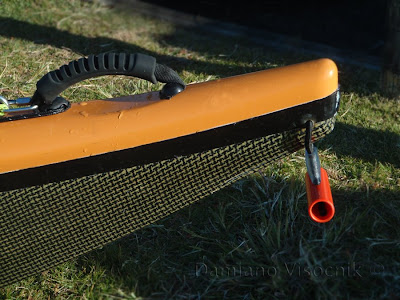Safety Code for Canoeists
You
* You must be able to swim at least 50 yards in light clothing.
* Always assess the water you are going on and wear the appropriate safety gear i.e. buoyancy aid, spraydeck, crash hat.
* Know your own limits and stay within them.
* Never paddle alone. Paddle with a group and always make sure someone else knows where you are paddling and when you expect to finish.
Your Kit
* Wear appropriate clothing for the day – never wear too little – you can always remove some. In cold or wet weather, and always at sea, wear waterproof and windproof clothing. Protect yourself from sunburn, especially face, head, neck and arms.
* Carry enough dry clothing in waterproof containers, extra emergency food (high calorie) and a hot drink, in case of a capsize in the cold.
* If the water temperature is low and you are liable to get wet, if possible wear a wet suit or a latex dry suit.
* Never wear wellington boots – but the lightweight sort sold for yachting are all right.
* Carry sufficient food and drink for the day. Don’t rely on finding a pub or cafe. Have a good meal an hour or two before the start, in cold weather.
* Have enough to drink. Low fluid levels contribute to both hypothermia and heat exhaustion.
* Avoid alcohol. Don’t take it on the water or canoe after having over-indulged the previous evening. Alcohol contributes to hypothermia.
* Carry a First Aid Kit, including any medication needed for yourself.
* Carry a Canoe / Kayak Repair Kit.
* Long rescue lines and/or throwbags should be carried by at least two people in the group.
Your Kayak
.jpg) It must have:
It must have:
* a footrest adequate to prevent you slipping down the boat
* a secure seat and cockpit rim
* bow and stern toggles/grips/handles
* adequate buoyancy front and rear, secured in place, supplemented for sea trips
* If safety lines are fitted, these must be firmly secured to the boat and must not obstruct the cockpit area.
* Make sure packed gear does not obstruct the cockpit area and leg space i.e. does not obstruct escape.
* Never have more than one person in a single cockpit.
Your Canoe
It must have:
* secure seat/s
* bow and stern toggles/grips/handles
* adequate buoyancy front and rear, secured in place, supplemented for sea trips
If safety lines are fitted, these must be firmly secured to the boat and must not obstruct paddlers.
Make sure packed gear does not obstruct escape.
On the river
* Keep clear of overhanging trees and banks, particularly on bends.
* Keep clear of sluices and weirs (both above and below unless you know what you are doing).
* Don’t paddle too close to the person in front, and be prepared to stop quickly if necessary.
* On “navigable” waters used by other vessels, keep out of their way, and remember the rule of the road – keep to the right of oncoming traffic. Local exceptions may apply (e.g. rowing clubs may have a special arrangement to use the “wrong” side in some places).
Capsizes and rescues
* Learn rescue procedure – you may need it on any water. The Club encourages all paddlers of Two Star standard upwards to take the Canoe Safety Test.
* In the case of a capsize, always hang on to your boat and paddle. The boat will guide you through rapids. The exception to this is when heading for a large weir – you can move faster by yourself.
* After a capsize get back in your boat as quickly as possible, either by landing or by rafting up for support, and change into dry clothing (unless wearing a wet suit/dry suit) either while in your boat or on the bank. Make sure your boat is properly emptied of water


